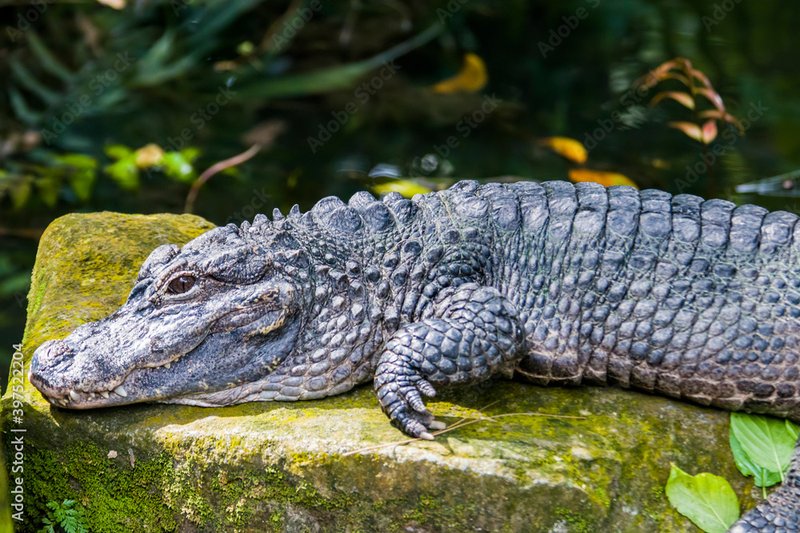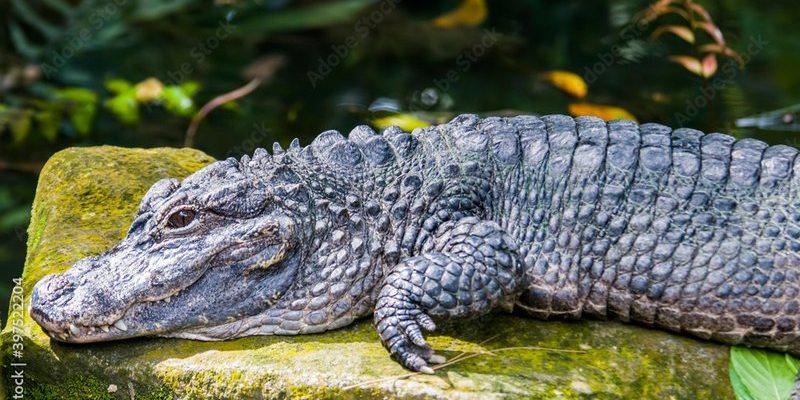
Though they may not be as well-known as their American relatives, Chinese alligators are unique in many ways. From their habitat in the Yangtze River basin to their impressive adaptations, these alligators have a story that’s just as compelling. So, let’s dive into some surprising tidbits about these special reptiles!
1. Size and Distinction
You might be surprised to learn that the Chinese alligator is significantly smaller than its American counterpart. While American alligators can grow over 13 feet, Chinese alligators typically reach only about 5 to 7 feet in length. They have a more stocky build compared to their slender relatives, and their skin is darker, often appearing almost blackish-brown. This coloration helps them blend into their muddy habitat where they hunt and hide.
Here’s the thing: Their smaller size doesn’t mean they are any less impressive. With their broad snouts and tough, armored skin, they are still formidable predators. Imagine a compact tank moving stealthily through the water—Chinese alligators are just as efficient in their environment.
2. Habitat and Range
The Chinese alligator is primarily found in the Yangtze River region, particularly in the freshwater wetlands, lakes, and slow-moving rivers. Unlike some of their counterparts that thrive in brackish waters, these alligators prefer fresh water. However, their habitat has been increasingly threatened by habitat destruction and pollution.
Sadly, the once-abundant populations of Chinese alligators have dwindled due to urban development, agriculture, and other human activities. Today, they are classified as critically endangered, meaning there are fewer than 150 individuals left in the wild. It’s a tough situation that highlights how quickly a species can be pushed to the brink of extinction.
3. Unique Behavior and Diet
What do Chinese alligators eat? You might think of alligators as fierce hunters, and while that’s true, the Chinese alligator has a more varied diet than you might expect. They mainly feed on fish, frogs, and small mammals, but they are also known to munch on plants—yes, plants! This omnivorous diet is one of the reasons they can adapt to their changing environment.
Honestly, their hunting strategy resembles that of the ultimate stealth ninja. They lie still and wait for prey to come near, then strike with remarkable speed. It’s fascinating how these reptiles have developed such efficient methods to thrive in their specific habitats.
4. Breeding and Nesting Habits
The breeding season for Chinese alligators typically occurs in the warmer months, around May to July. Female alligators create nests by piling up vegetation and laying up to 40 eggs at a time. Interestingly, the temperature of their nests can influence the gender of the hatchlings. Warmer nests may produce more males, while cooler ones tend to produce females.
Once the little ones start to hatch, the mother takes an active role in helping them get to water, a behavior that’s quite touching compared to the more hands-off approach seen in other reptiles. You might be wondering: how does she protect them? Well, she stands guard, keeping potential predators at bay. It’s heartwarming to think about such protective instincts in reptiles!
5. Conservation Status
As mentioned earlier, the Chinese alligator is critically endangered, facing multiple threats. Conservation efforts are underway to protect this species, including habitat restoration and breeding programs. Organizations work tirelessly to raise awareness about their plight, trying to rally support from the public and governmental bodies.
Let me explain: Conservation isn’t just about saving the alligators; it’s about preserving the entire ecosystem they inhabit. This includes the wetlands and waterways that provide countless benefits to the environment and to humans, like clean water and biodiversity.
6. Cultural Significance
In Chinese culture, alligators, including their Chinese cousins, hold various meanings. They are often seen as symbols of strength and resilience. You might even find references in ancient texts or folklore, where these creatures represent the balance of nature and the coexistence of life.
People sometimes depict them in paintings or sculptures, celebrating their unique features. This cultural significance adds an interesting layer of intrigue to the already fascinating story of the Chinese alligator.
7. Differences from Other Alligator Species
While alligators mostly share similarities, there are notable differences between the Chinese alligator and others, such as the American alligator. The Chinese version has a wider head, denser bone structure, and a more pronounced ridge on its snout. It’s like comparing a compact car to a full-sized SUV; they serve different purposes and are built for distinct environments.
Moreover, the vocalizations of Chinese alligators are also different, with a series of grunts and hisses that resonate in their specific habitats. You might find it intriguing that these sounds help establish territory and communicate with one another, just like any other animal in the wild.
8. The Role in Ecosystems
Chinese alligators play a crucial role in their ecosystem, acting as both predator and prey. By controlling the population of smaller animals, they help maintain balance within their environment. Without these reptiles, the ecosystem may face overpopulation of certain species, which can lead to ecological disturbances.
Additionally, their nesting habits also contribute to nutrient cycling in wetlands, enriching the soil and benefiting various plant life. Here’s the thing: When we lose a species like the Chinese alligator, we risk altering the entire ecosystem in unpredictable ways.
Exploring the world of the Chinese alligator reveals just how remarkable and complex these creatures truly are. From their size and habitat to their cultural significance, there’s so much more to them than meets the eye. It’s crucial that we continue to spread awareness and support efforts to conserve this amazing species, not just for their sake, but for the health of our planet as well.
Take a moment to appreciate the beauty and mystery surrounding the Chinese alligator—these lesser-known giants are a valuable part of our natural heritage, and they certainly deserve our attention and protection.

